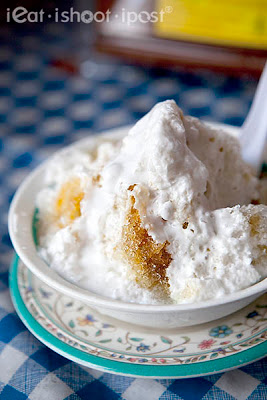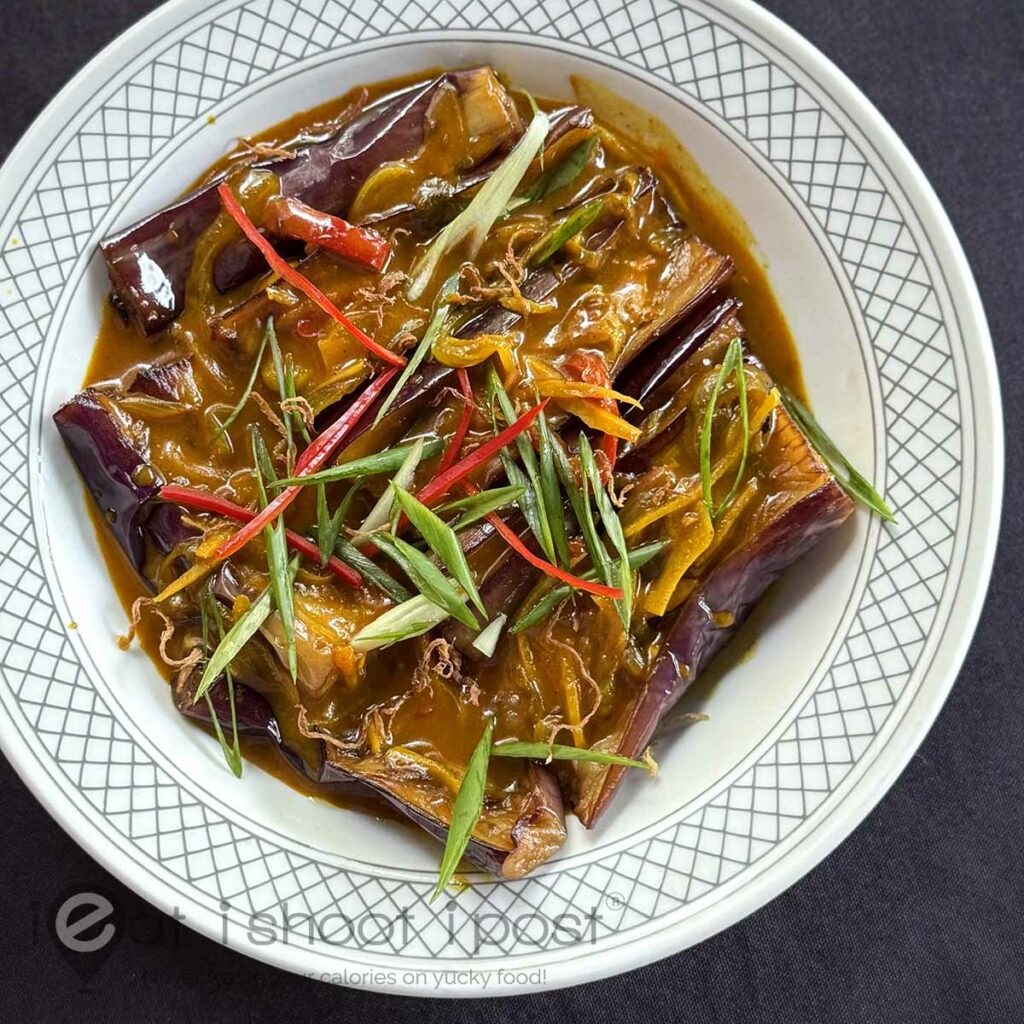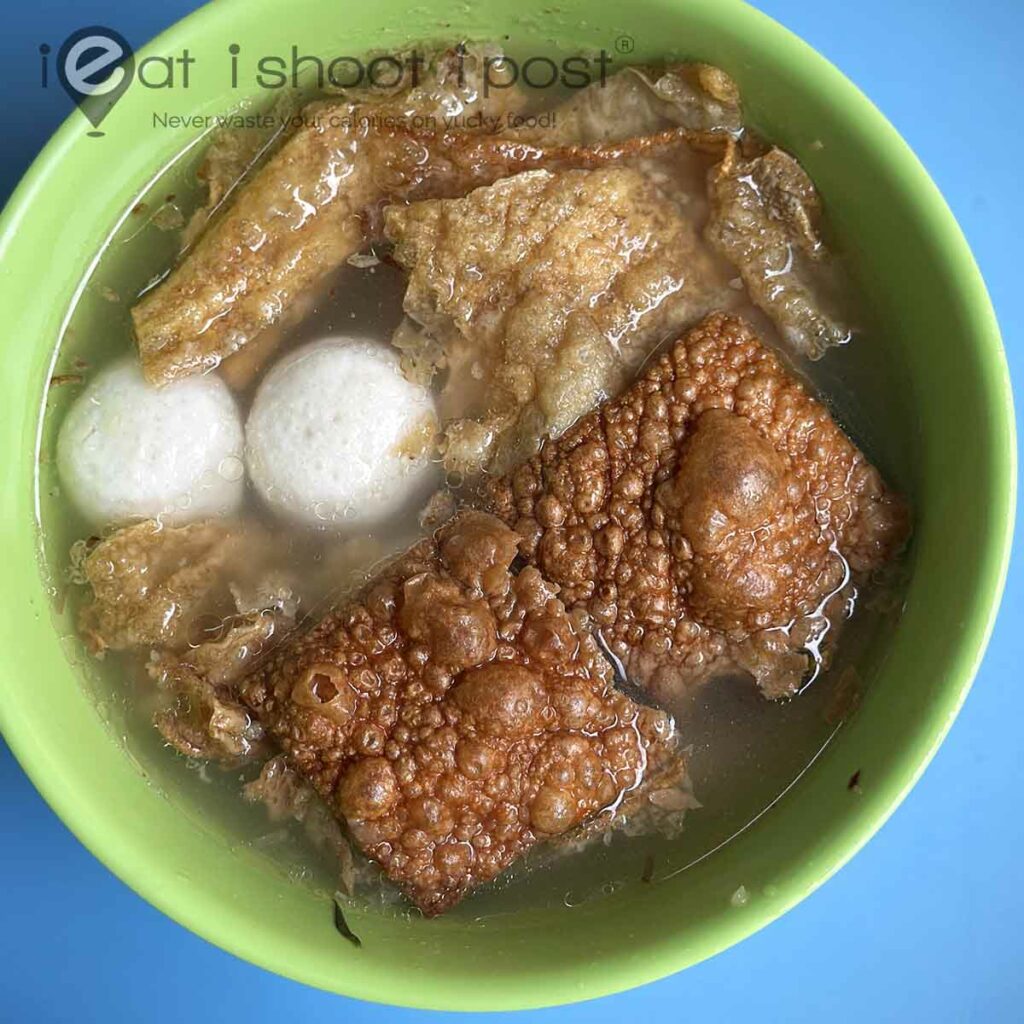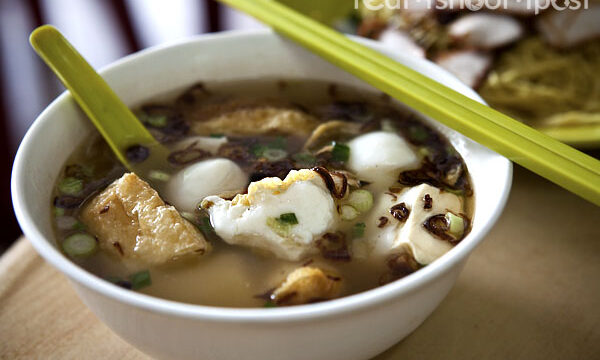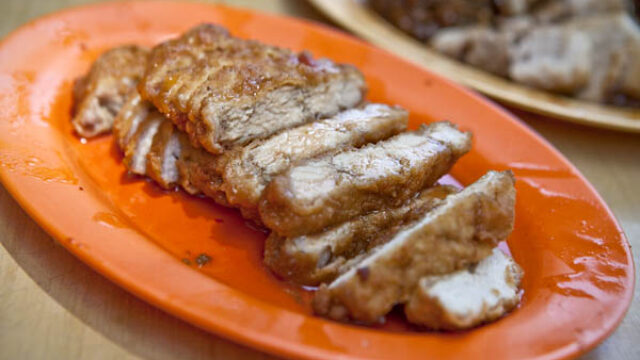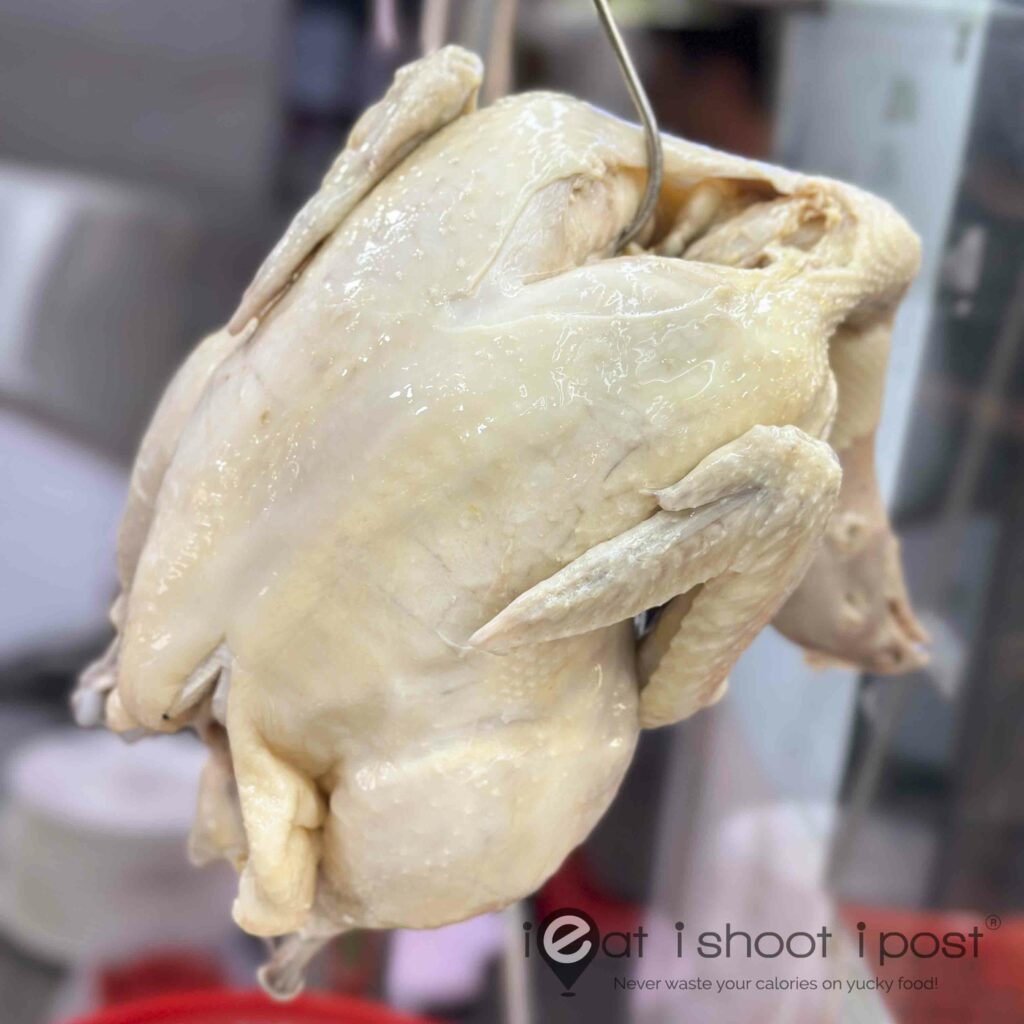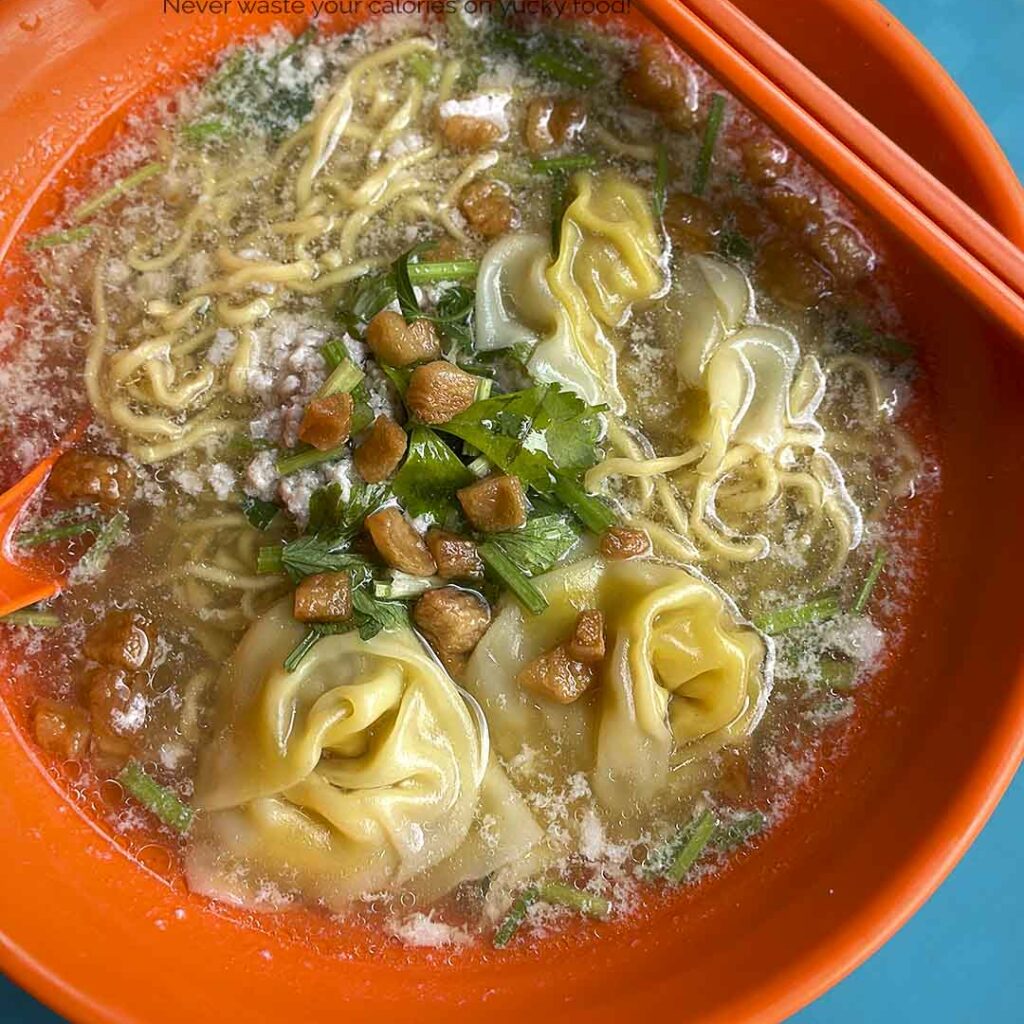Although Poh Piah originated from China, we have a version that really is unique to our little island or at least amongst the Peranakans living along the Malayan Straits. When you first eat this version of the Poh Piah, you might not really take to it because it is slightly different from the ones we are used to. For one, they don’t use the fried crunchy bits and secondly, they use freshly ground chilli instead of the chilli sauce in a typical Hokkien Poh Piah.
This particular Nonya style Poh Piah has another interesting characteristic. The skin is not your typical Poh Piah skin which is made by throwing a ball of dough onto a hot plate and retrieving it. This one uses an egg skin that is made from a batter, much like a crepe. Apparently this is an old style of making Poh Piah skin that is all but disappearing. The texture is more tender, like the skin of Kueh Dah Dah and is less dry than the common Poh Piah skin.
Personally, I still prefer the Hokkien version because I like the chewy dry style skin as well as lot of crunchy bits in my Poh Piah. However, I do know that there are a lot of others out there who would swear by this Poh Piah. Most of the facebook fans who grew up eating this Poh Piah prepared by their Peranakan grandmothers will most likely prefer this, but still think their grandmother’s is the best. Whatever your preference, this is one of the most unique Poh Piahs on our island, so I think it is one which you need to try for yourself. 4/5
Glory has been around for a long long time and besides the Poh Piah, they serve Nasi Padang style dishes in their restaurant together with a splattering of Nonya or Nonya inspired dishes. It’s a family run place and it feels like it. I have passed by this place countless of times but this is the first time I actually stepped in. It had been on my list of Poh Piah places to review since I always hear of the raving reviews. Holydrummer is one who has been telling me about it for ages.
Since we were there, I decided we needed to try some of their other stuff like the cendol. Again, I wasn’t overly thrilled with it. When eating cendol, I always look out for the pale green homemade cendol as well as sweetened kidney beans. Both were missing, although the coconut milk and gula melaka were rich and thick. 4/5
Conclusion
I don’t know of any other places that are still selling this style of Poh Piah. That alone should be enough to lure any Poh Piah lover to go try. I think this is something that is of an acquired taste. If you remember having it as a kid, you probably would love it. If not, you probably would feel like I did.





